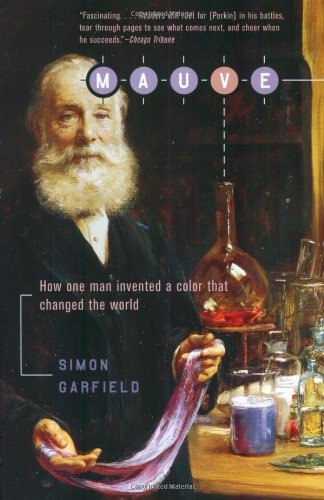Mauve
In 1856, an eighteen-year-old English chemistry student named William Perkin was trying to synthesize quinine. He failed – quinine would not be synthesized until 1944 (by Woodward and Doering) – but noticed that one of his failures seemed to leave a pretty purple residue. This residue turned out to be mauveine, the first artificial dye and the foundation of the modern chemical industry. This readable account is short of scientific detail (although it does nicely capture how little chemistry Perkin and his contemporaries knew), but nicely captures the importance of the dye trade as a stepping stone to propellants, pharmaceuticals, and plastics.
